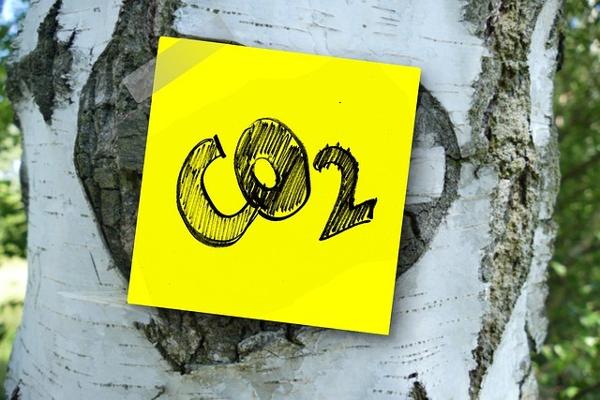The Russian invasion of Ukraine has triggered renewed focus on the use of energy resources as geopolitical “weapons.” The experiences for oil and natural gas — Russia’s two main energy exports, and the leading energy sources for the EU and U.S. — have followed distinctly different paths. Most markedly, Russia has tried to use the EU’s dependence on its natural gas exports to make the latter less supportive of Ukraine. The EU, the U.S., and their allies have, in turn used oil sanctions in hopes of constraining Russia’s military actions in Ukraine. The strategies reflect each side’s perception of leverage, which is a function of differences in how oil and gas are accessed, traded, and used (including the availability alternatives), as well as a host of other factors—some of which supported each side’s perception of geopolitical leverage…but as we shall see, other factors unexpectedly constrained each side’s ability to use the “energy weapon” (For our in-depth report go here).
Oil Is a Global Market; Natural Gas Is Not
If Russia cut oil supply, the move would have reverberated immediately around the globe, hurting not only Europe and the U.S., but also key actors like China and India — both large oil importers and both not as unequivocally hostile to the Russian invasion. In contrast, natural gas trade is more regional, with only a fraction of flows flexible globally. Additionally, due to LNG being much more complex to transport, its flows are limited to places where costly infrastructure already exists, which would make it difficult for Europe to replace Russian gas volumes.
Oil Has Strategic Backstops; Natural Gas Does Not
Oil has been a focus of energy security policy since the Arab oil embargo 50 years ago, and a substantial set of backstops have been developed, including strategic stockpiles held by the International Energy Agency member countries. These can be released in a coordinated manner to avoid supply shortages and price spikes and helping Europe and the US as Russian volumes exit the market. Spare production capacity is another backstop, although held mostly within OPEC’s Saudi Arabia and the UAE—and rather than using spare capacity, OPEC and cooperating countries like Russia instituted large production cuts in October of last year. Neither of these backstops exist for natural gas.
Gas has Issues with Storage and Transport
In addition to lack of strategic programs akin to those for oil, commercial storage of natural gas in Europe is not only insufficient and not uniformly distributed but gas is more difficult and more costly to transport and store while requiring expensive infrastructure that takes time to be built. All this, supported dependence on Russian gas. But, transport difficulties-especially limited LNG and non-European pipeline export capacity—also constrained Russia’s ability to find new markets for its natural gas.
Gas Has More Substitutes.
Despite heavy dependence on Russian gas, to cope with the reduction in Russian natural gas deliveries Europe was aided by the availability of substitutes for power generation via its rapidly-growing renewables output and the use of coal — as well as the delay in closing Germany’s nuclear plants. Additional LNG, albeit at a high cost, also became available. There are significantly fewer demand substitutes for oil.
Oil is More Politically Sensitive
The politics of “prices at the pump” help to explain the relatively tepid U.S./EU actions on oil. In contrast to natural gas, a larger share of oil products is consumed by individuals and families (especially in the U.S.), and sudden, large price changes are often politically charged. Pricing of natural gas to consumers also lags based on long-term contracts, providing a cushion for the governments and more time to respond. At the same time, electricity prices have been subsidized by many EU governments.
Oil Is more Complex.
Grades of crude oil vary dramatically, which impacts the ability of refiners to switch between different sources of supply. Once processed in a refinery, the range of products is equally complex. Finally, a long history of oil-related sanctions on countries including Iran and Venezuela has led to the development of sanction-busting networks — capabilities that Iranian officials have reportedly shared with Russia.
The complexity of factors, some of which cut to ways, made it difficult - at least for now- for both sides to deliver the results they expected in deploying the “energy weapon”.
- Dependence on oil as the leading energy source (without an immediately viable substitute) in the U.S. and the EU, along with the global nature of the oil market, have severely constrained Western options to restrict Russian oil exports and revenues.
- Strategic backstops in the form of OPEC spare capacity and Western emergency stockpiles provided less flexibility than hoped for. The best that Western sanctions could accomplish was an effort to make permanent discounts on crude oil that Russia was already offering to find new markets (and to extend those discounts to refined products).
- For natural gas, reduced demand (through emergency actions, warm weather, and price-induced demand destruction), and alternative supplies allowed Europe to survive the winter of 2022-23 without a full-blown energy crisis, although it did have to pay steep prices for fuel. Ironically, a lack of flexibility in export options meant that Russian natural gas not sold in Europe has been largely unable to find new markets elsewhere.
As the turn of events since the Russian invasion of Ukraine demonstrate, perceptions of geopolitical energy leverage have largely proved to be either inaccurate or incomplete.
Is the “energy weapon” a myth?
Current failure of energy weapon is admittedly not complete, as both parties have incurred severe blows to their economies. War is rarely exact science. War making is an art that requires significant skills. Here both parties have misread market and trading structures. Profit motives – i.e., significant price changes – can incentivize large and rapid changes in the behavior of producers and consumers alike. While the initial battle is over, the energy war continues. Events beyond the control of either side in the conflict loom large and may have created a false sense of security. For Europe, the short-term win was due to factors like mild winter weather and being able to ramp up purchases of liquefied natural gas because a recession in Asia dampened demand. But these are not long-term solutions, and hoping for another warm winter is not a strategy. For Russia, ability to keep oil and oil income has been related to the need for the former and the high-level prices. But are these going to continue?
Future adjustments by both sides may alter their perceptions and actual vulnerability to the use of energy as a weapon. Russia is working to develop new natural gas markets beyond Europe, and climate policies are likely to reduce European and U.S. dependence on oil and natural gas over time. But in the near-term, the critical importance of oil and natural gas in the energy mix means that the possibility of employing energy as leverage will remain a geopolitical reality.
Mark Finley is the Fellow in Energy and Global Oil at the Baker Institute. Before joining the Baker Institute, Finley was the senior U.S. economist at BP. For 12 years, he led the production of the BP Statistical Review of World Energy, the world’s longest-running compilation of objective global energy data.
Anna Mikulska is Fellow in Energy Studies at Rice University’s Baker Institute and Senior Fellow at Foreign Policy Research Institute.




















